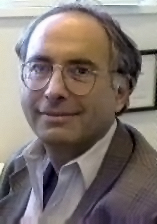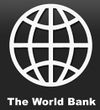Difference between revisions of "Stephen Moses"
m (using template:RCT Bailey et al 2007) |
m (wikify Michel Garenne) |
||
| Line 87: | Line 87: | ||
}}</ref>Of the three {{#tip-text:RCT|Randomized controlled trial}}s being used by the [[WHO]] to endorse circumcision as [[HIV]] prevention, Stephen Moses and [[Robert C. Bailey]] headed the {{#tip-text:RCT|Randomized controlled trial}} that was carried out in Kenya.<ref>{{RCT Bailey et al 2007}}</ref> Moses obviously brought his pre-existing bias in favor of male circumcision into the trial, so he did not start from a neutral position. | }}</ref>Of the three {{#tip-text:RCT|Randomized controlled trial}}s being used by the [[WHO]] to endorse circumcision as [[HIV]] prevention, Stephen Moses and [[Robert C. Bailey]] headed the {{#tip-text:RCT|Randomized controlled trial}} that was carried out in Kenya.<ref>{{RCT Bailey et al 2007}}</ref> Moses obviously brought his pre-existing bias in favor of male circumcision into the trial, so he did not start from a neutral position. | ||
| − | Moses' research on circumcision protection from [[HIV]] infection is now completely discredited. Boyle & Hill (2011) reviewed the three randomized controlled trials (RCTs) and found disabling methodological and statistical errors in all three. Although a 60 percent ''relative'' reduction in [[HIV]] was claimed, the ''absolute'' reduction was a statistically insignificant 1.3 percent.<ref name="boyle-hill2011">{{BoyleGJ HillG 2011}}</ref> Garenne & Matthews (2019) report that circumcised men have as much [[HIV]] infection as intact men.<ref>{{REFjournal | + | Moses' research on circumcision protection from [[HIV]] infection is now completely discredited. Boyle & Hill (2011) reviewed the three randomized controlled trials (RCTs) and found disabling methodological and statistical errors in all three. Although a 60 percent ''relative'' reduction in [[HIV]] was claimed, the ''absolute'' reduction was a statistically insignificant 1.3 percent.<ref name="boyle-hill2011">{{BoyleGJ HillG 2011}}</ref> [[Michel Garenne|Garenne]] & Matthews (2019) report that circumcised men have as much [[HIV]] infection as intact men.<ref>{{REFjournal |
|last=Garenne | |last=Garenne | ||
|init=M | |init=M | ||
| − | |author-link= | + | |author-link=Michel Garenne |
|last2=Matthews | |last2=Matthews | ||
|init2=A | |init2=A | ||
Revision as of 13:49, 12 April 2022

|
| Stephen Moses |
| Associates With: |
| Gilgal Society Circlist |
| Colleagues & Benefactors: |
| Daniel T. Halperin Edgar J. Schoen Robert C. Bailey Bertran Auvert Maria J. Wawer Brian J. Morris |
Stephen Moses, Professor, Departments of Medical Microbiology, Community Health Sciences and Medicine. Stephen Moses has been a circumcision proponent since at least 1994.[1] Moses (along with Robert C. Bailey) was responsible for one of the three major African circumcision trials (funded by NIAID and the Canadian Institutes of Health Research)[2] which are being used by the World Health Organization (under the guide of UNAIDS) to endorse circumcision as an HIV prevention method.[3]
Interests
According to Stephen's bio, his interest is in biological and behavioural risk factors for STI/HIV transmission.[4] Moses has been an advocate of circumcision since at least 1994.[1]
RCT in Kenya
Three trials were funded by the American National Institutes of Health.[5]Of the three RCTs being used by the WHO to endorse circumcision as HIV prevention, Stephen Moses and Robert C. Bailey headed the RCT that was carried out in Kenya.[6] Moses obviously brought his pre-existing bias in favor of male circumcision into the trial, so he did not start from a neutral position.
Moses' research on circumcision protection from HIV infection is now completely discredited. Boyle & Hill (2011) reviewed the three randomized controlled trials (RCTs) and found disabling methodological and statistical errors in all three. Although a 60 percent relative reduction in HIV was claimed, the absolute reduction was a statistically insignificant 1.3 percent.[7] Garenne & Matthews (2019) report that circumcised men have as much HIV infection as intact men.[8]
Active projects
- A randomized, controlled trial of male circumcision to reduce HIV incidence in Kisumu, Kenya.[4]
National Institutes of Health. - Scaling up HIV prevention in Karnataka and southern Maharashtra, Phase II.[4]
Bill & Melinda Gates Foundation. - Monitoring and evaluation of the Avahan project in India.[4]
Bill & Melinda Gates Foundation. - Technical assistance to improve maternal, neonatal & child health through National Rural Health Mission, India.[4]
Bill & Melinda Gates Foundation. - Mapping key populations for HIV prevention in Sri Lanka.[4]
World Bank.
Publications
 Smith JS, Backes DM, Hudgens MG, Bailey RC, Agot K, Ndinya-Achola JO, Moses S, et al. Prevalence and risk factors of human papillomavirus infection by penile site in uncircumcised Kenyan men. Int. J. Cancer. January 2010; 126(2): 572–7. PMID. PMC. DOI.
Smith JS, Backes DM, Hudgens MG, Bailey RC, Agot K, Ndinya-Achola JO, Moses S, et al. Prevalence and risk factors of human papillomavirus infection by penile site in uncircumcised Kenyan men. Int. J. Cancer. January 2010; 126(2): 572–7. PMID. PMC. DOI. Moses S. Top Achievements in Health Research: Male circumcision: a new approach to reducing HIV transmission. CIHR/CMAJ. October 2009; 181(8): E134–5. PMID. PMC. DOI.
Moses S. Top Achievements in Health Research: Male circumcision: a new approach to reducing HIV transmission. CIHR/CMAJ. October 2009; 181(8): E134–5. PMID. PMC. DOI. Mehta SD, Gray RH, Auvert B, Moses S, Kigozi G, Taljaard D, Puren A, Agot K, Serwadda D, et al. Does sex in the early period after circumcision increase HIV-seroconversion risk? Pooled analysis of adult male circumcision clinical trials. AIDS. July 2007; 23(12): 1557–64. PMID. PMC. DOI.
Mehta SD, Gray RH, Auvert B, Moses S, Kigozi G, Taljaard D, Puren A, Agot K, Serwadda D, et al. Does sex in the early period after circumcision increase HIV-seroconversion risk? Pooled analysis of adult male circumcision clinical trials. AIDS. July 2007; 23(12): 1557–64. PMID. PMC. DOI. Bailey RC, Moses S, Parker CB, et al. Male circumcision for HIV prevention in young men in Kisumu, Kenya: A randomised controlled trial. Lancet. 24 February 2007; 369(9562): 643–56. PMID. DOI. Retrieved 31 December 2021.
Bailey RC, Moses S, Parker CB, et al. Male circumcision for HIV prevention in young men in Kisumu, Kenya: A randomised controlled trial. Lancet. 24 February 2007; 369(9562): 643–56. PMID. DOI. Retrieved 31 December 2021. Nagelkerke NJD, Moses S, de Vlas SJ, Bailey RC. Modelling the public health impact of male circumcision for HIV prevention in high prevalence areas in Africa. BMC Infect. Dis.. 2007; 7: 16. PMID. PMC. DOI.
Nagelkerke NJD, Moses S, de Vlas SJ, Bailey RC. Modelling the public health impact of male circumcision for HIV prevention in high prevalence areas in Africa. BMC Infect. Dis.. 2007; 7: 16. PMID. PMC. DOI. Krieger JN, Bailey RC, Agot K, Parker C, Ndinya-Achola JO, Moses S, et al. Adult male circumcision outcomes: experience in a developing country setting. Urol Int. 2007; 78(3): 235–40. PMID. DOI.
Krieger JN, Bailey RC, Agot K, Parker C, Ndinya-Achola JO, Moses S, et al. Adult male circumcision outcomes: experience in a developing country setting. Urol Int. 2007; 78(3): 235–40. PMID. DOI.
See also
References
- ↑ a b
 Moses S, Plummer FA, Bradley JE, Ndinya-Achola JO, Nagelkerke NJ, Ronald AR. The association between lack of male circumcision and risk for HIV infection: a review of the epidemiological data. Sex Transm Dis. 1994; 21: 201-210.
Moses S, Plummer FA, Bradley JE, Ndinya-Achola JO, Nagelkerke NJ, Ronald AR. The association between lack of male circumcision and risk for HIV infection: a review of the epidemiological data. Sex Transm Dis. 1994; 21: 201-210.
- ↑
 Krieger JN, Bailey RC, Opeya J, et al. Adult male circumcision: results of a standardized procedure in Kisumu District, Kenya. BJU Int.. November 2005; 96(7): 1109–13. PMID. DOI.
Krieger JN, Bailey RC, Opeya J, et al. Adult male circumcision: results of a standardized procedure in Kisumu District, Kenya. BJU Int.. November 2005; 96(7): 1109–13. PMID. DOI.
- ↑
 World Health Organization (27 March 2007).
World Health Organization (27 March 2007). WHO and UNAIDS announce recommendations from expert consultation on male circumcision for HIV prevention
. Retrieved 23 February 2011. - ↑ a b c d e f
 Moses, Stephen.
Moses, Stephen. Dr. Stephen Moses
, University of Manitoba. Retrieved 23 February 2011. - ↑
 (2016).
(2016). HIV/AIDS
, Doctors Opposing Circumcision. Retrieved 23 March 2020.
Quote:...funding from the United States National Institutes of Health to conduct randomized controlled trials (RCTs) in Africa.
- ↑
 Bailey RC, Moses S, Parker CB, et al. Male circumcision for HIV prevention in young men in Kisumu, Kenya: A randomised controlled trial. Lancet. 24 February 2007; 369(9562): 643–56. PMID. DOI. Retrieved 31 December 2021.
Bailey RC, Moses S, Parker CB, et al. Male circumcision for HIV prevention in young men in Kisumu, Kenya: A randomised controlled trial. Lancet. 24 February 2007; 369(9562): 643–56. PMID. DOI. Retrieved 31 December 2021.
- ↑
 Boyle GJ, Hill G. Sub-Saharan African randomised clinical trials into male circumcision and HIV transmission: Methodological, ethical and legal concerns
Boyle GJ, Hill G. Sub-Saharan African randomised clinical trials into male circumcision and HIV transmission: Methodological, ethical and legal concerns  . Thompson Reuter. December 2011; 19(2): 316-34. PMID. Retrieved 30 December 2020.
. Thompson Reuter. December 2011; 19(2): 316-34. PMID. Retrieved 30 December 2020.
- ↑
 Garenne M, Matthews A. Voluntary medical male circumcision and HIV in Zambia: expectations and observations. J Biosoc Science. 1 October 2019; 14: 1-13. PMID. DOI. Retrieved 25 March 2020.
Garenne M, Matthews A. Voluntary medical male circumcision and HIV in Zambia: expectations and observations. J Biosoc Science. 1 October 2019; 14: 1-13. PMID. DOI. Retrieved 25 March 2020.

